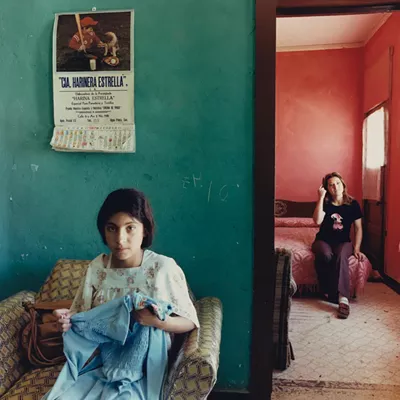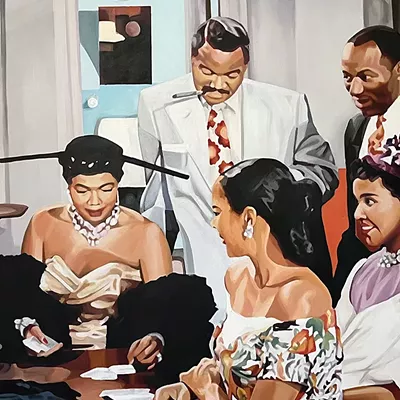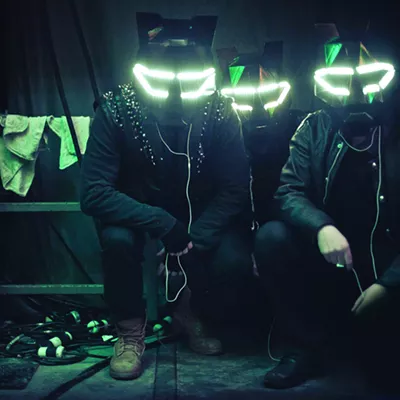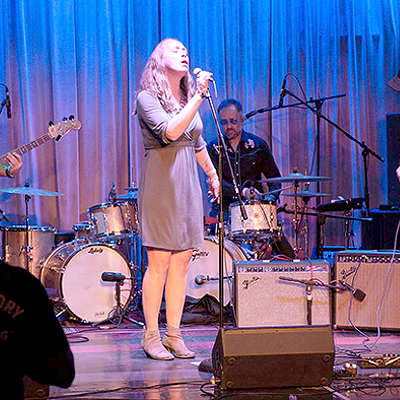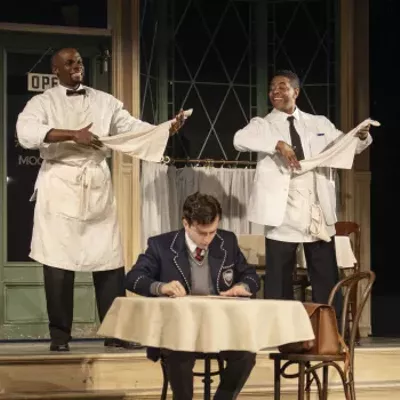"Just give me two days around my family and the Southern drawl comes back," Tibbs said by phone last week from Los Angeles, where the Nederlands Dans Theater II was beginning its U.S. tour. He has good reason to speak like a European: He's lived in The Hague, Netherlands, for 28 years. The artistic director of NDT II since 1990, Tibbs danced with its Dutch parent company, Nederlands Dans Theater, for 15 years before that.
In a busy dance week that also offers up tangos by Argentines and dances by UA students, NDT II's young dancers will perform one concert at Centennial Hall Saturday night.
"They are dancers at the threshold," Tibbs said. "They're very open, honest and hardworking. Most choreographers pick up on that. More than 25 years, we've found young, quite talented dancers from all over the world."
The classical training of the dancers, all of them 17 to 22 years old, prepares them for the genre-crossing work for which the NDT is known. Their dances, he said, "are very contemporary--I like that term better than modern. Modern is almost classical now while contemporary is about what's happening in our time. Our work is a marriage of classical movement to what's happening today--a combination of the two classics."
The parent company split off from the more traditionally minded Nederlands Ballet back in 1959, and made a name for itself with daring, modern-influenced ballet. In 1978, it spawned the younger company, which fills its ranks through annual auditions that attract hopefuls from all over the world. In Tucson, with two dancers out with injuries, the company of 14 will perform a trio of works by three choreographers, including a renowned Israeli whose own troupe, Bat Sheva, is on the UApresents lineup for next year.
"Ohad Naharin is very well known in Europe," Tibbs said. "He does pieces for the main company every season or every other season." The entire company appears in Naharin's "Minus 16," a dramatic compilation piece with music ranging from Israeli traditional to "Somewhere over the Rainbow."
Paul Lightfoort's piece for five dancers, "Sad Case (or Said and Done)," is a "collection of Latin/Spanish music. It's quite light and enjoyable." Jirí Kylián, the Czech choreographer who has led the main company since 1975, set the work "Indigo Rose" on the young dancers five years ago.
"It's a collage of five composers," Tibbs said. "He was making the piece, each section different, and the dancers worked as hard as ever for him, striving for perfection. Finally he told them, 'Perfection doesn't exist. You try to achieve. That's all you can do.'" Out of this realization, Tibbs said, came the title: "An indigo rose does not exist."
THE POPULAR TANGO BUENOS Aires has already sold out its Thursday concert at Centennial Hall.
A perennial favorite among Tucson audiences enamored of all things Latin American, tango dance actually came out of Africa. Slaves brought their own stylized moves to Argentina in the 19th century, and incubated them into the tango in the New World. Now known everywhere as a sensuous dance of male-female eroticism, tango originally pitted man against man, with dancers competing to out-stride and out-pivot each other. By the 1860s, tango moved to the city, where working-class men strutted by night in the dance halls of Buenos Aires' poor districts.
Tango Buenos Aires, formed almost 20 years ago in a cabaret in its hometown, first started touring in the United States in 1986. It's now under the musical direction of Fernando Marzan, a classical and tango pianist who worked on the Evita soundtrack with Madonna. The Washington Post calls the troupe "a seasoned and authentic tango company," whose dances are "swirling, fast-paced tapestries of movement, laced with proud postures and sensual couplings."
Disappointed tango ticket seekers will get a chance to see one tango piece in the Sparktacular Showcase Concert at Centennial Hall Tuesday evening. A potpourri of work from students and faculty in the UA School of Music and Dance, the concert offers a fragment of "Twisted Tango," a larger work by UA dance prof Amy Ernst.
"It has a cast of 19, but it goes pretty quick," Ernst said. "It's a humorous piece, a takeoff," set to classic tango music by Astor Piazzolla.
The concert is designed as a fast-paced "collage," with 16 student ensembles performing short pieces in rapid succession in assorted locations, from the hall lobby to the orchestra pit to the stage to the balcony rafters. The UA Steel Band will command the patio out front and the UA Mariachi will stake out the lobby. Other locations will host the Cello Octet, the Wind Sextet, the Brass Quintet and singer Katherine Byrnes, accompanying the Jazz Band. Soprano Faye Robinson, a professor and acclaimed singer, will perform the "Jewel Song" from Gounod's Faust. Another prof, violinist Mark Rush, plays the Preludio from J.S. Bach's Partita No. 3.
The tango is one of just three dances. A team of 20 student dancers will perform excerpts from West Side Story to Leonard Bernstein's music, played by the UA Wind Ensemble.
"It's the scene in the gym where Tony and Maria see each other for the first time from across a room," choreographer and prof Michael Williams said. "It goes into a dream ballet and then snaps back with everyone pulling them away."
Jory Hancock, dance division head, contributed waltzes for three couples in a scene from the Puccini opera La Rondine, which the music students fully staged last weekend. The collaboration between opera and dance students presages their future in the new combo dance/opera theater, now nearing completion. Together, they'll perform to the "gorgeous melody," Hancock said. "It's beautiful music."

